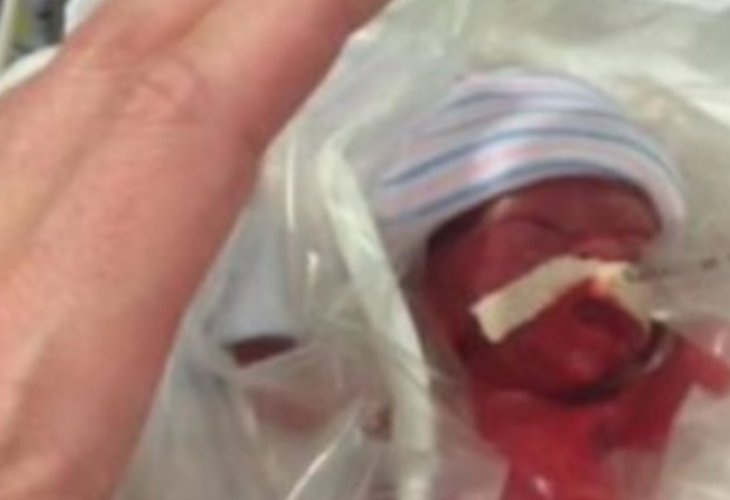The Miracle of Skin-to-Skin Contact: How a Preemie Beat the Odds
A prematurely born baby weighing less than one pound was saved through a remarkable method recommended by many doctors.

When Angela gave birth to her first daughter, Naomi, she never imagined it would be the hardest moment of her life. "I couldn't even hold her because she was so tiny," she recalls. "She was born 15 weeks early, at just 25 weeks, and weighed a little less than half a kilogram."
The elated parents, Michael and Angela, were only allowed to touch their daughter through the closed incubator in the intensive care unit.
Naomi's first hours in the world were critical, and her parents could only "hope for the best," as they put it. "When I was allowed to hold her after two weeks, it was a joyous moment. She was still in critical condition, so I decided to try and help her using 'Kangaroo Mother Care,' which I read about online," Angela shares.
This well-known practice is recommended by many doctors for preemies born at such a fragile weight. Known as 'skin-to-skin' contact in English, this method involves the mother or father placing the premature baby on their skin to provide warmth and comfort. Studies have shown that this method reduces the risk of hypothermia, lowers illness levels, and improves survival chances in preemies. "Within days of adopting the practice, Naomi's condition improved drastically," Angela says.
After 128 days, Naomi was discharged home, healthy and stable.

What You Might Not Know About 'Kangaroo Mother Care':
- This method was developed in 1978 in Colombia to cope with a shortage of incubators for preemies.
- It has proven to be effective even for infants born at a normal weight and on time.
- This care regulates the baby's heart and breathing rates, improves oxygen flow to the brain, and reduces apneas and irregular heartbeats in preemies.
- Enhances the baby's sleep quality and reduces tension during sleep.
- Assists in improving breastfeeding quality.
- Reduces the risk of postpartum depression in mothers.
- Decreases crying in the baby's first months.
- It's not enough just to have the baby's skin against the parent's; the baby should be in a frog-like position, with arms and legs slightly bent.
- If practiced immediately after birth, the baby should be placed naked on the mother, covered with a blanket, and given a warm hat to prevent body heat loss.

